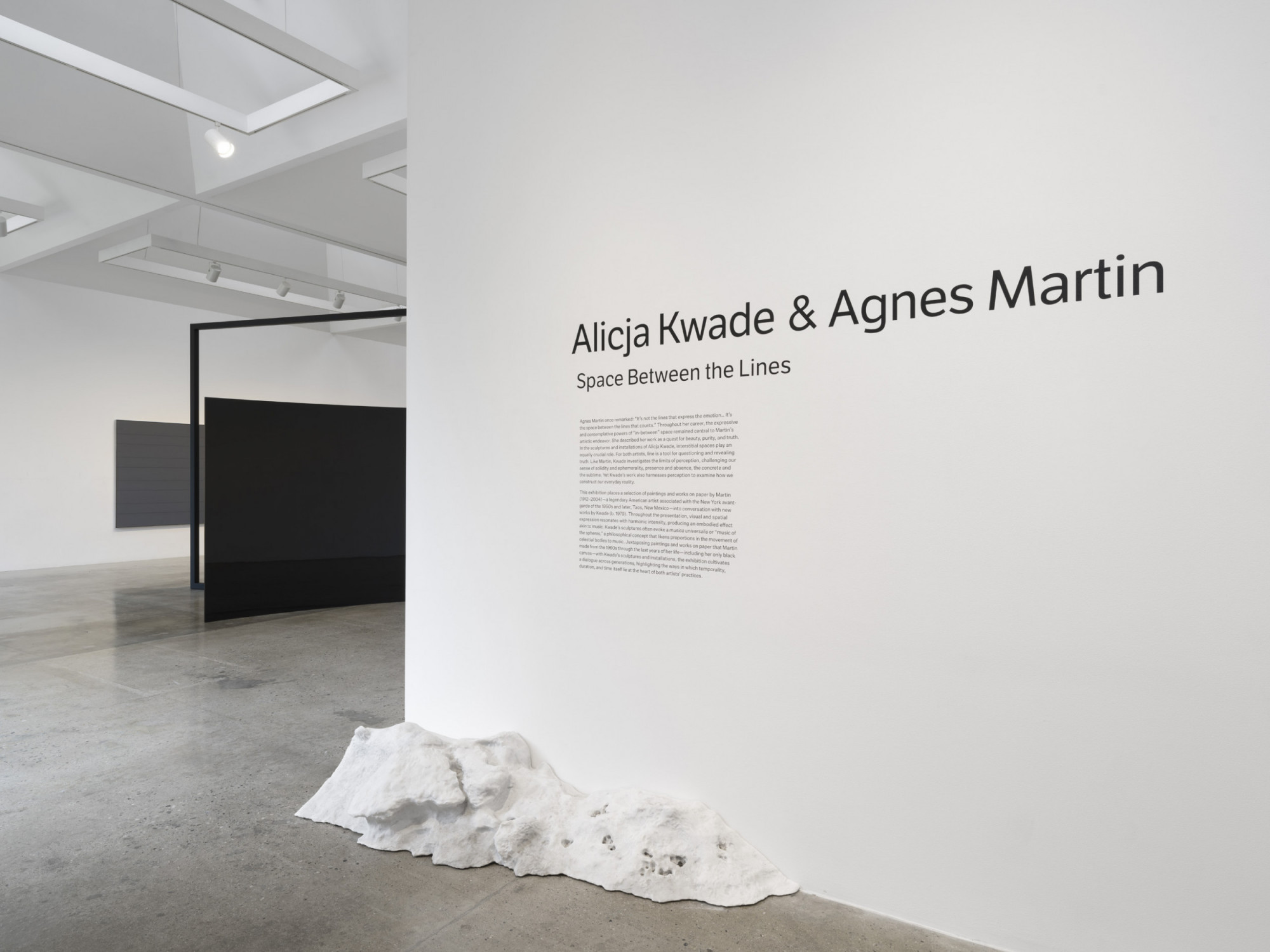



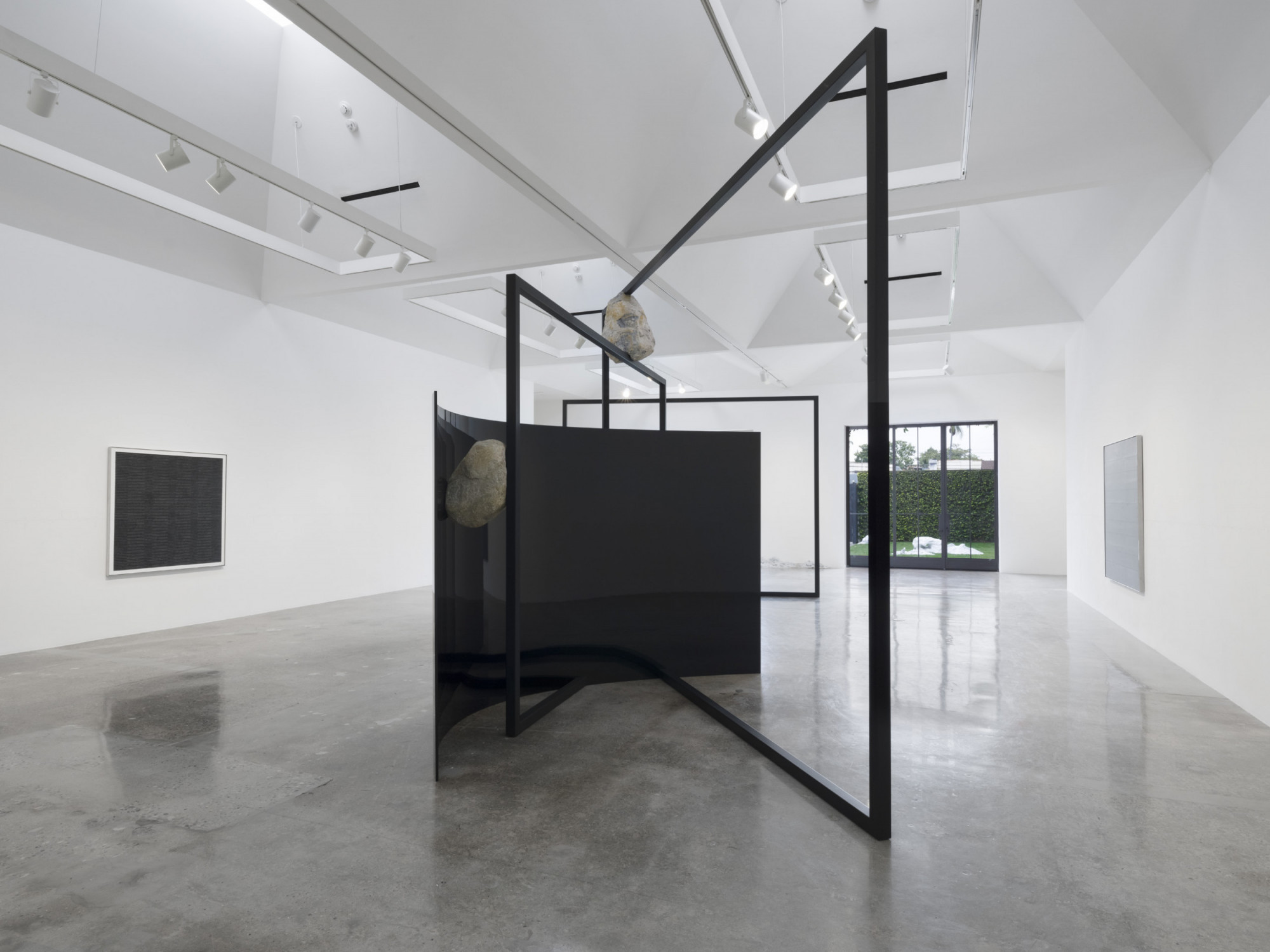
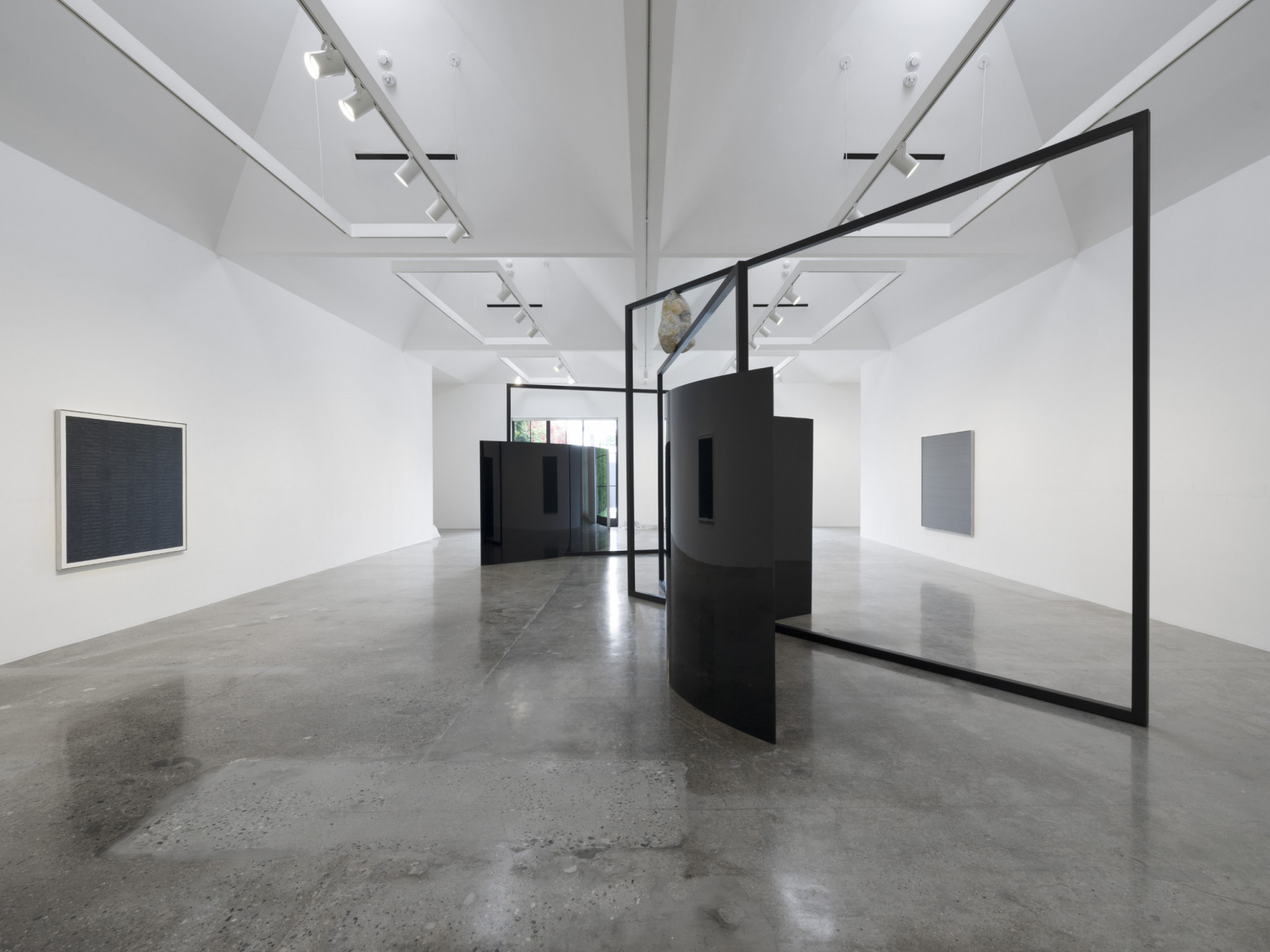

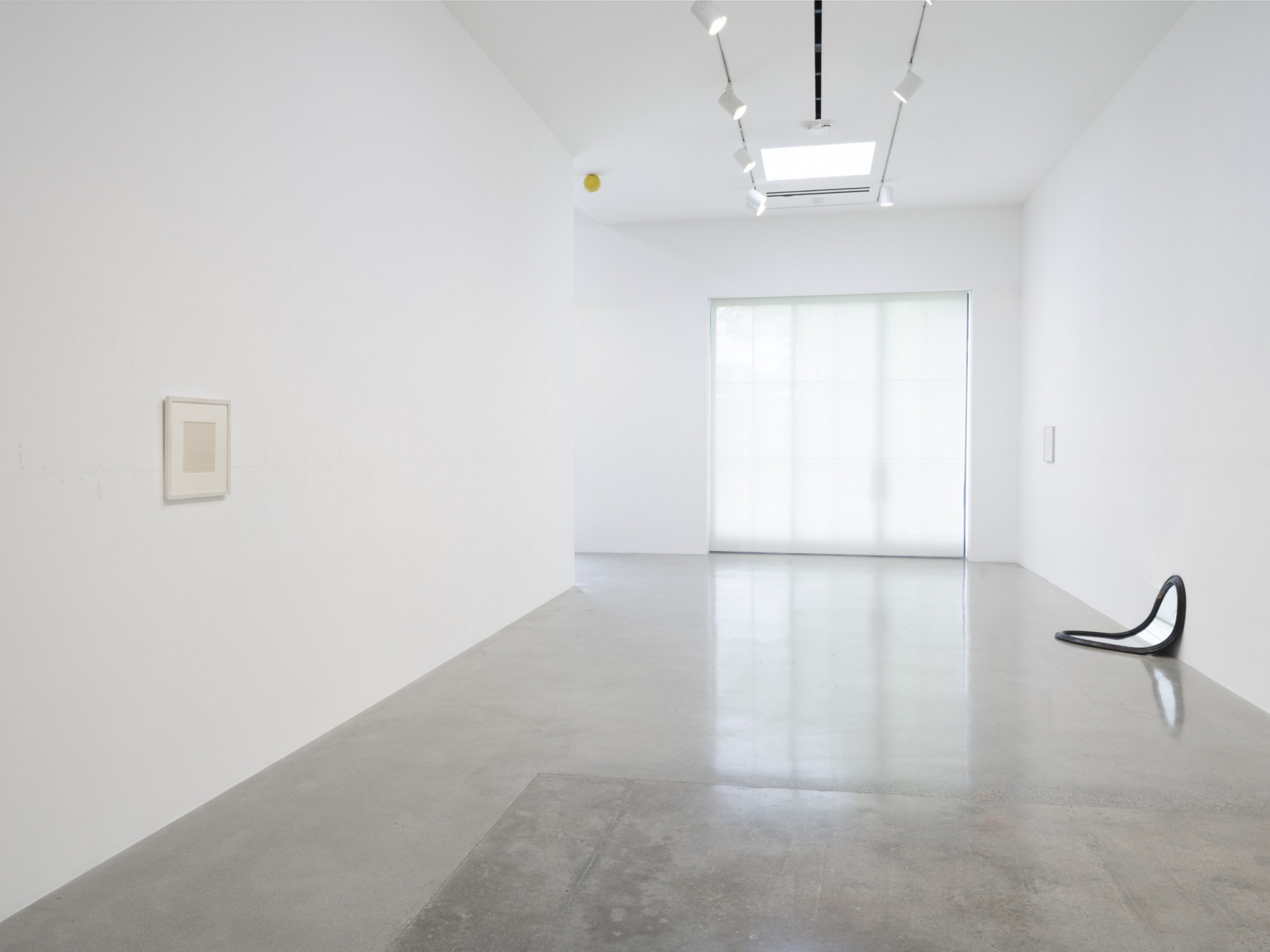
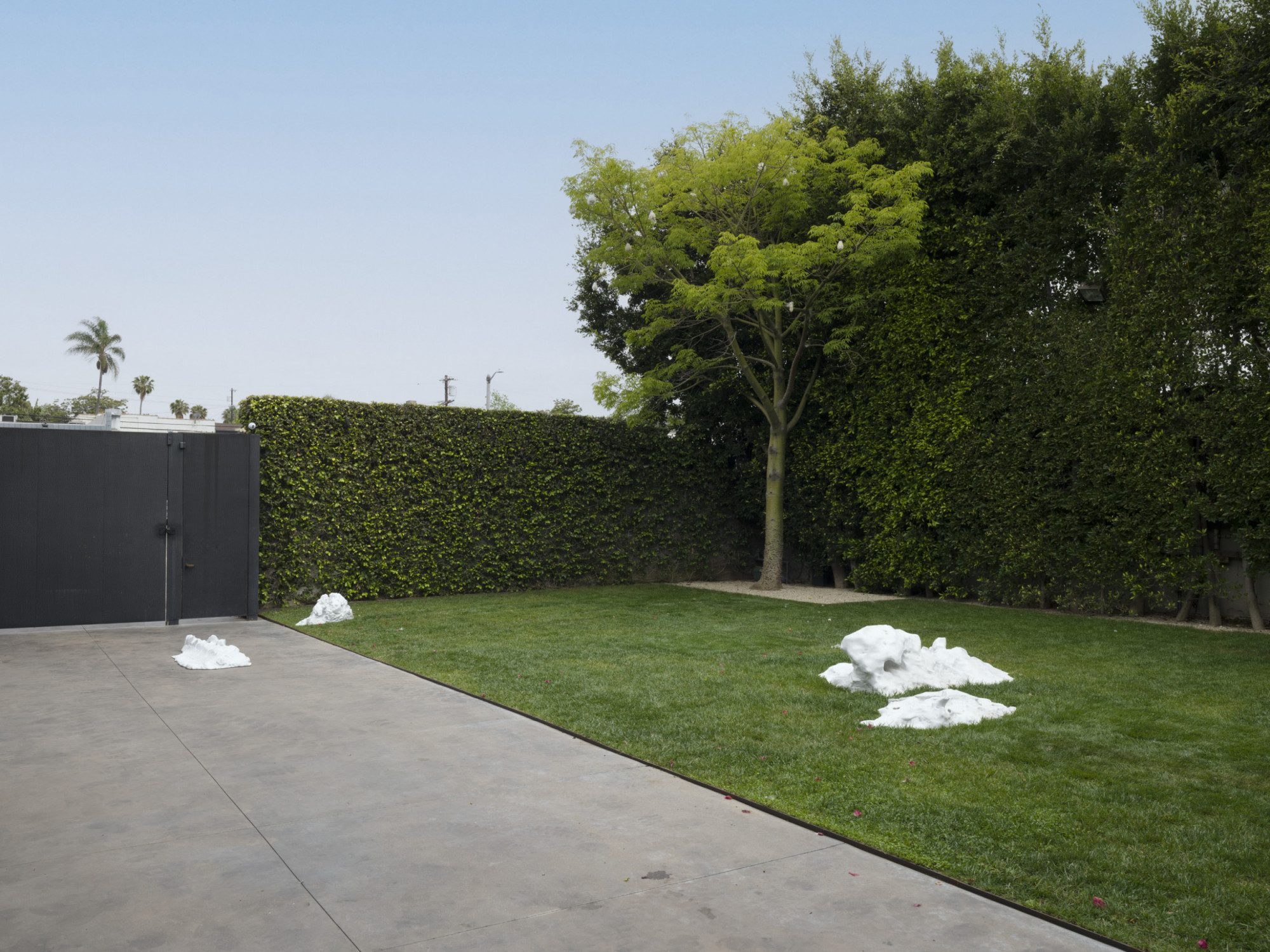


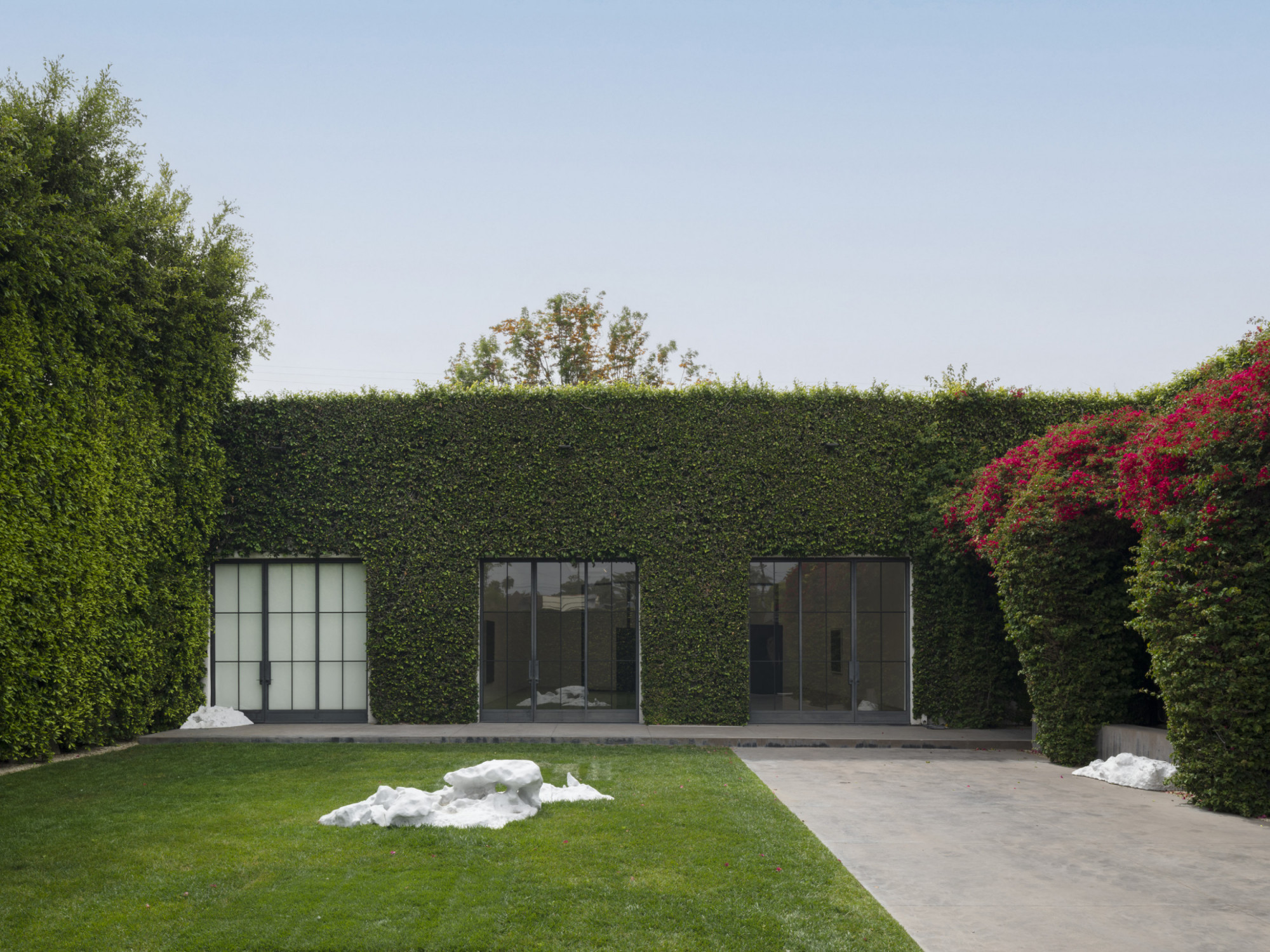
Pace is pleased to present a two-artist exhibition of work by Alicja Kwade and Agnes Martin — co-curated by Kwade and Arne Glimcher, the gallery’s founder — at its Los Angeles space. On view from May 18 to June 29, this show will place works by Kwade, including two new large-scale sculptures, in dialogue with a selection of paintings and works on paper by Martin. This will be Kwade’s first significant presentation of new work in Los Angeles and her first major exhibition with Pace since joining the gallery in 2023.
Kwade is known internationally for sculptures, large-scale public installations, films, photographs, and works on paper that engage poetically and critically with scientific and philosophical concepts. Through a distinctive vocabulary encompassing reflection, repetition, and the manipulation of everyday objects and natural materials, the artist raises questions about structures and systems that govern and shape our daily lives. In her contemplative works, which dismantle boundaries of perception, she challenges commonly accepted ideas and beliefs while proposing new modes of seeing and understanding reality.
The result of a longstanding conversation that Kwade has undertaken with Glimcher around the work of Agnes Martin, who was a close friend of Glimcher and whom he has represented since 1974, the exhibition at Pace’s LA gallery centers on the affinities and intersections between Kwade’s artistic concerns and those of Martin. Although separated by generations, several threads run through both artists’ practices—in particular, their focus on time and temporality as an organizing principle of perceptual experience. These artists also share a fascination with the relationship between truth and beauty. While Kwade’s work is often grounded by a conceptual armature, Martin sought to express a transcendental quietude and purity through painting. For both artists, ordered, mathematical systems, often expressed through their use of line, are integral to their approaches to artmaking. On a formal level, enactments of balance, negotiations of symmetry and non-symmetry, and explorations of liminal, in-between spaces cut across their works.
“For some time, I have been interested in a dialogue between Agnes Martin’s paintings and the sculptures of Alicja Kwade,” Glimcher says of the exhibition, “Both artists have been involved in the possibilities of line, both bring a meditative sensibility, and both are interested in questions of time. Both make works that reveal themselves slowly, with time. I have always felt Agnes’s work is closer to music than it is to traditional painting, and with Alicja, there is a parallel sense of adjacency with other modes of perception.”
Two new large-scaled sculptures by Kwade — which are related to her ParaPivot series — will anchor the exhibition. In these works, titled Distorted Dream (2024) and Distorted Day (2024), carved stone orbs appear to float within a framework of polished steel plates and powder-coated steel frames, which intersect at oblique angles. Reflecting her interest in ancient astronomy, Kwade’s ParaPivot sculptures suggest imagined solar systems realized in miniature, in which steel supports chart the orbital pathways of planetary bodies. Meanwhile, the artist’s large-scale Jo’s snow (2023) sculptures, which consist of sculpted marble forms that naturalistically resemble piles of partially melted snow, will be on view in the gallery’s courtyard, installed across the grassy outdoor space.
Highlights in the exhibition also include Martin’s painting, The Sea (2003), the only entirely black painting the artist ever made. In this composition, which Martin produced a year before her death, minutely incised horizontal lines of equal weights are painstakingly carved into the painted surface, producing a humming, vibratory effect reminiscent of flowing water. But Martin’s painting is in no way representational — she was interested, instead, in marking time in her work, creating material and durational encounters between her own body and the canvas. Like Kwade’s sculptures — whose open voids produce shifting views of Martin’s painting as viewers circumnavigate the gallery space — this painting, like the other works of Martin included in the exhibition, celebrates art’s phenomenological and perceptual powers.
@ Images Jeff Mclane